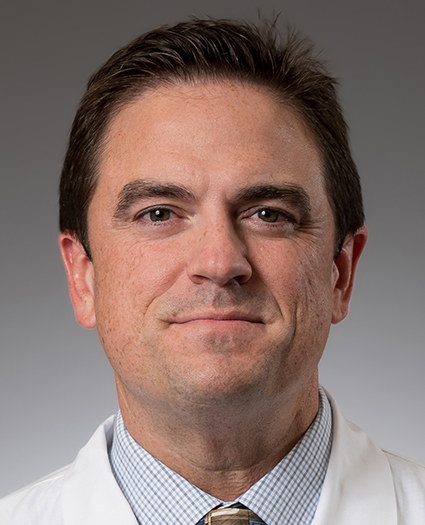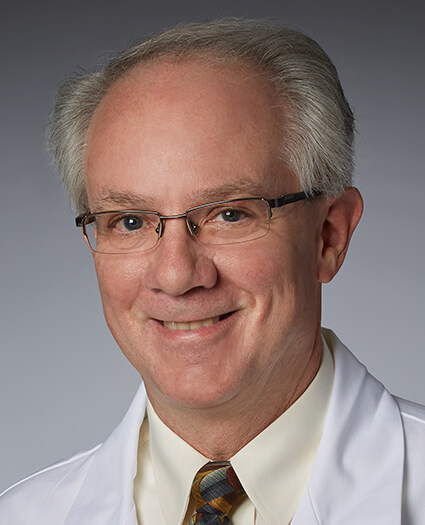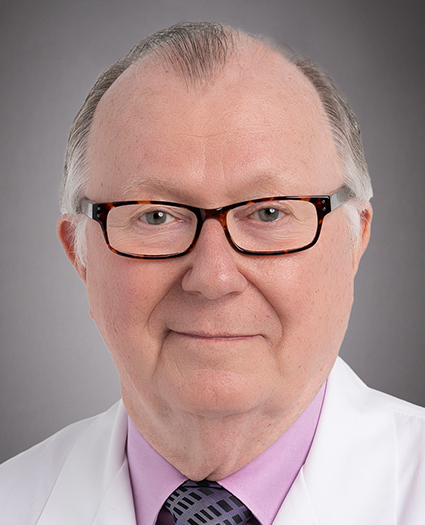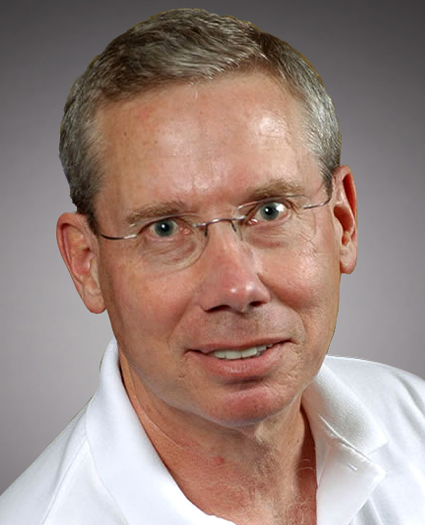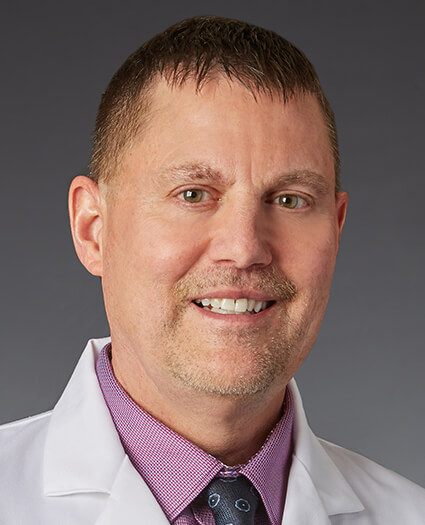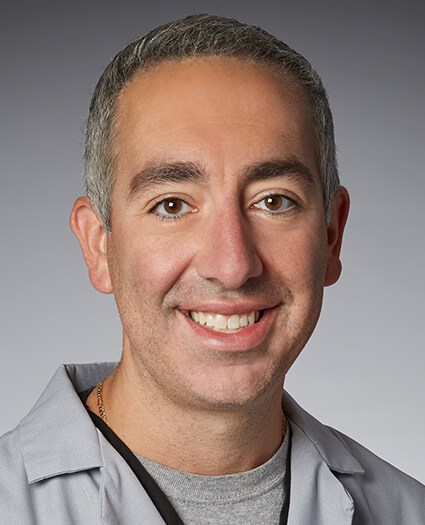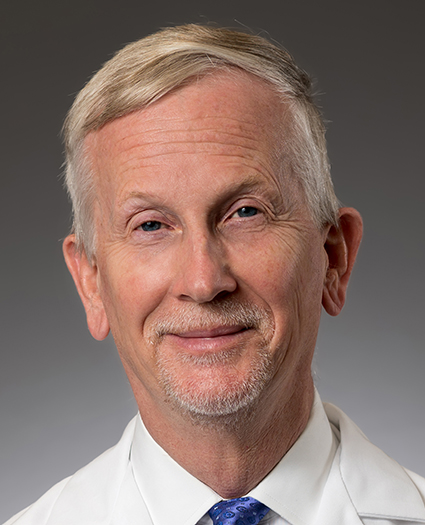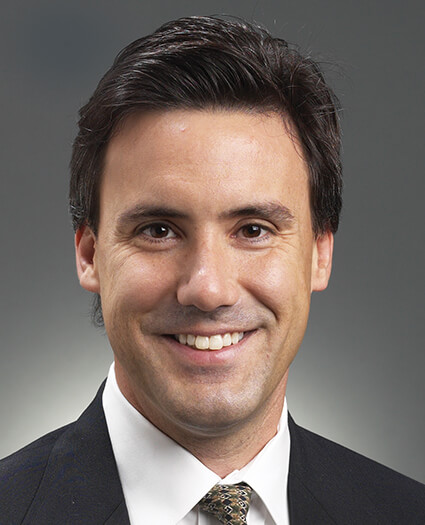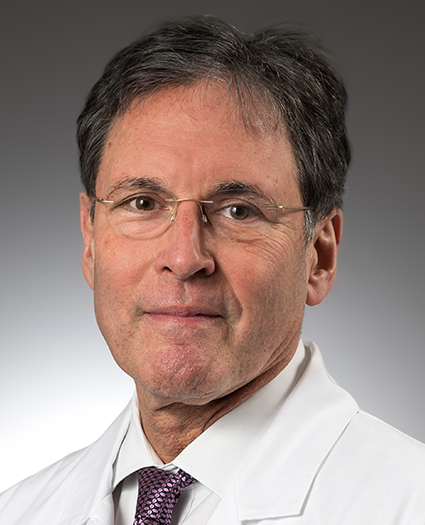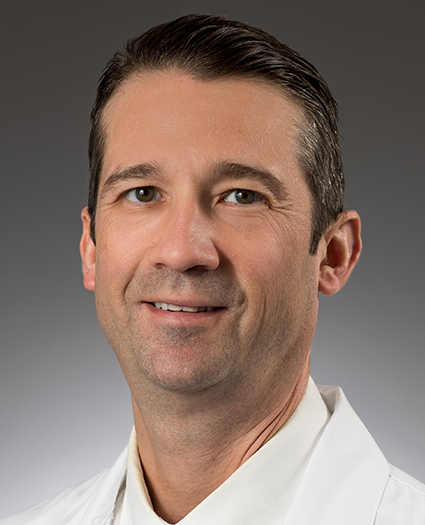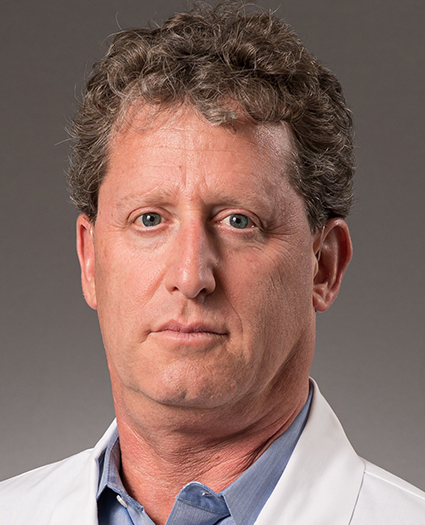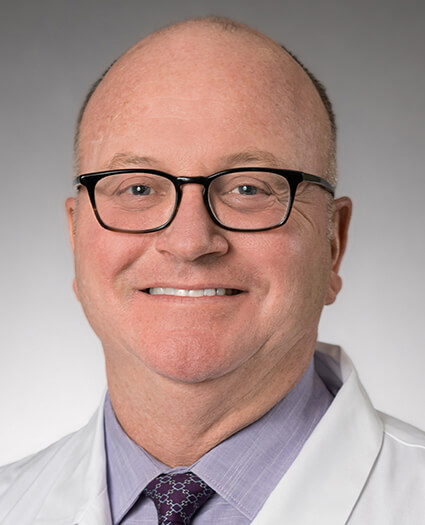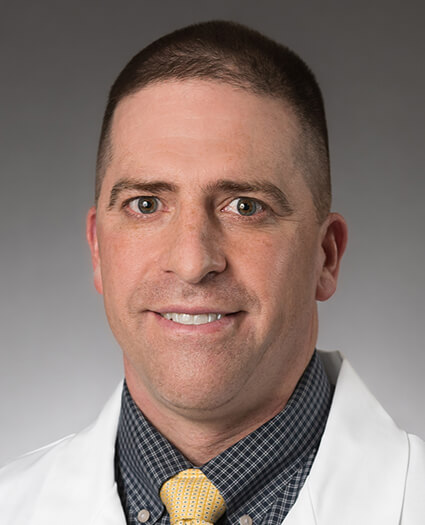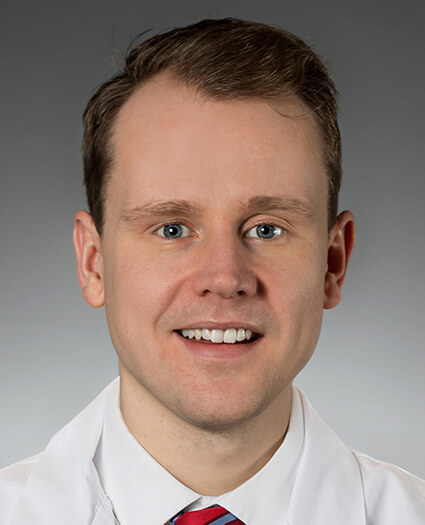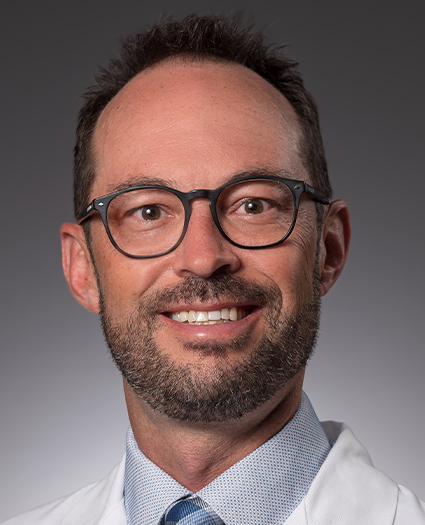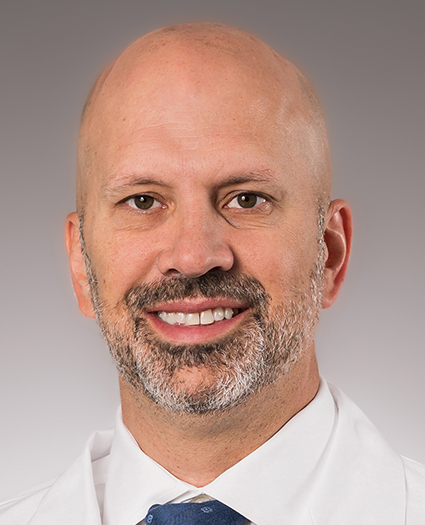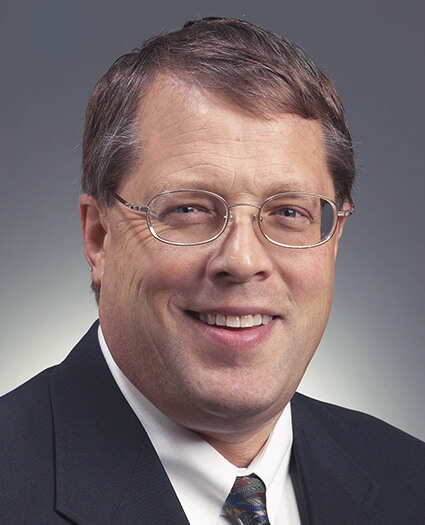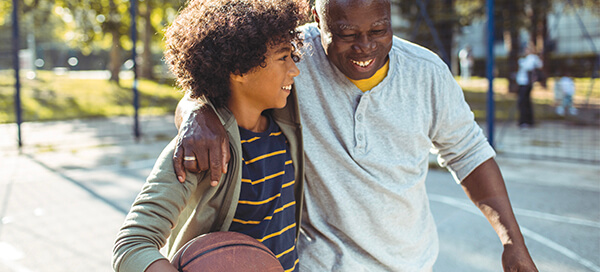
Care for athletes of all ages
Whether you are a high school or college athlete or a weekend warrior, you can be assured that you’ll receive the highest quality of care from our sports medicine orthopedic surgeons. Our world-class sports medicine specialists lead the way in getting athletes back in action, using the latest technology and treatment advancements in surgical and nonsurgical sports medicine care. This includes minimally invasive techniques and the use of biologic therapy to promote the body’s natural ability to heal.
Several of our doctors are the team physicians for the University of Akron and Kent State University, so they are familiar with a wide range of sports-related overuse and acute injuries. They have helped countless athletes return to action following a game-ending injury and can help you get back to top performance.
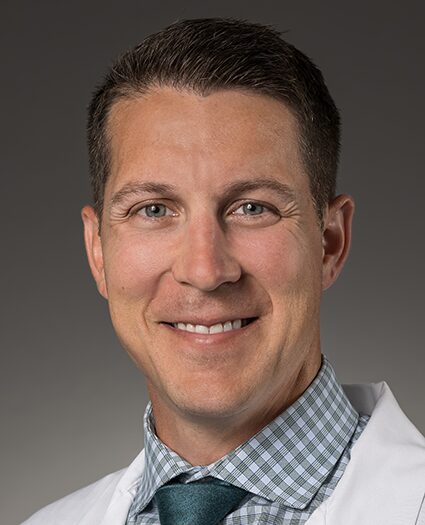
Salvatore Frangiamore, M.D., M.S.
Fellowship-Trained in Shoulder and Sports Medicine Surgery
Board-Certified
Common Conditions Treated
Common sports injuries fall into two categories: overuse and acute. Overuse injuries develop slowly over time when an activity is repeated frequently. Acute injuries are more unexpected and the result of a sudden, traumatic event that has caused bruising, fractures, sprains, strains or tears.
Of course, overuse injuries can affect anyone, regardless of age; even twentysomethings who are in their athletic prime. With active children, it’s not unusual to see growth plate inflammation and stress fractures. In the older population, chronic overuse can exacerbate a degenerative problem like arthritis.
While any part of the body can be affected, the knee and shoulder are more susceptible to injury. With both knees and shoulders, we see a lot of patients with bursitis and tendinitis as a result of overuse. Patellofemoral Pain Syndrome is another common overuse injury, which causes pain at the front of the knee and around the kneecap.
As for acute injuries, many athletes – especially those playing basketball, football, and soccer – come in with ACL, MCL, tendon and cartilage tears in their knees, caused by quick pivoting and sharp, cutting movements. In contact sports, cartilage and labrum tears, torn rotator cuffs, and dislocated shoulders can occur when there is a direct blow to the shoulder or you have fallen awkwardly on an outstretched arm.
Deciding when to see a doctor boils down to whether you have an acute or chronic injury. You want to see a doctor or an athletic trainer (if you’re a student athlete) sooner rather than later, if you have an acute injury that greatly restricts your movement or causes pain and swelling. Generally, we consider acute injuries to require immediate, urgent care. In contrast, seeing a doctor for an overuse injury depends on how it’s affecting your daily life. If you’ve stopped going to the gym as part of your routine or are having trouble sleeping because of pain, it might be time to get checked out.
The most frequently seen sports medicine-related conditions are described below.
Bursitis
Bursitis is inflammation of a bursa that temporarily limits motion. It’s often the result of injury, overuse, spinal abnormalities, arthritis or surgery. Symptoms include pain, swelling and tenderness in the joint. Rest and over-the-counter anti-inflammatory medications are usually effective at providing relief.
Cartilage Damage
Healthy cartilage makes it easier to move and allows bones to glide with little friction. Cartilage is unique in that it lacks a blood supply; and once impaired, cartilage does not heal well. If left untreated, arthritis can develop.
Articular cartilage can be damaged by twisting injuries (typically seen in athletes) or by normal wear and tear as we age (arthritis). Articular cartilage is the smooth, white tissue that covers the ends of bones to form joints. Anywhere from 5 to 10 percent of people over the age of 40 have a high-grade injury to their cartilage. Frequently, this is a result of anterior cruciate ligament (ACL) injuries.
Should you notice knee pain, swelling, a “catching” feeling, or instability, you may have damaged cartilage. Work up starts with x-rays to rule out arthritis and, if needed, an MRI to get a more detailed look at the extent of the injury or defect.
Fractures
A fracture is a partial or complete break in the bone. There are many different types of fractures.
Bone fractures are often caused by falls, trauma, or as a result of a direct blow or kick to the body. Overuse or repetitive motions can cause stress fractures. Fractures can also be caused by diseases that weaken the bone. These include osteoporosis or cancer in the bones. The main goal of treatment is to put the pieces of bone back in place so the bone can heal. This can be done with a splint, cast, surgery, or traction.
Ligament Tears
Ligaments are elastic bands of tissue that connect bones to each other and provide stability and strengthen the joint. There are four main ligaments in the knee: anterior cruciate ligament (ACL), posterior cruciate ligament (PCL), medial collateral ligament (MCL) and lateral collateral ligament (LCL).
The ACL can tear during a sudden twisting motion and are most commonly seen in those who ski or play basketball or football. Damage to the PCL usually occurs as a result of a sudden direct impact from a car accident or a football tackle. Often, these injuries don’t cause significant pain, but you may hear a popping sound as the injury occurs, followed by the leg buckling when attempting to stand. The same is true for collateral ligament injuries. Treatment may include anti-inflammatory medications, muscle-strengthening exercises, protective bracing and icing. Surgery may be necessary to repair the tear.
Meniscus Injuries / Tears
Meniscus tears are one of the most common knee injuries. A tear may occur in different ways. Oftentimes, it can occur when playing sports, but may also happen after years of wear and tear. Older people may experience a tear from just an awkward twist when rising from a chair. Pain, stiffness and swelling, catching or locking of the knee, and limited range of motion are common symptoms. Depending on the location of the tear, surgery may or may not be necessary. Nonsurgical treatment includes RICE (rest, ice, compression, and elevation) and NSAIDS (non-steroidal anti-inflammatory drugs) like aspirin and ibuprofen.
Rotator Cuff Tears
One of the most important parts of your shoulder, your rotator cuff, consists of muscles and tendons that hold your shoulder in place and help you lift and rotate your arm. A rotator cuff tear is a common cause of pain and disability among adults. Rotator cuff tears can be caused due to a sudden injury, but can also occur as a natural deterioration of the tendon tissue due to aging. Common injuries to the rotator occur from lifting a heavy object or suffering a traumatic fall, but most rotator cuff problems develop over time because of the degenerative wear and tear that comes with aging. That is why most rotator cuff injuries are commonly seen in patients over the age of 40.
Symptoms of a rotator cuff tear can include recurrent pain, especially with certain activities; pain that prevents you from sleeping on your injured side; grating or cracking sounds when moving your arm; a limited ability to move your arm; and muscle weakness.
Sprains and Strains
Sprains and strains are common injuries that occur among people of all ages. A sprain happens when the ligaments that support the ankle stretch beyond their limits and tear. Ligaments are flexible bands of fibrous tissue that connect bones to bones, and bones to cartilage. Most sprains heal with getting rest and applying ice. However, if you’re having any difficulty moving, you’ll want to see your doctor.
Strains occur when a muscle or tendon is injured. Tendons are the fibrous cords that attach muscle to bone throughout your body. Similar to sprains, a strain may be an overstretched muscle or tendon, or it could be a partial or complete tear in the muscle and tendon combination. Pain, cramping, inflammation, muscle spasm, muscle weakness and swelling are the most common symptoms.
As with a sprain, strains heal with rest, ice, compression and elevation. For a more serious tear, surgery may be necessary.
Tendon Tears
Tendons are the fibrous tissues that connect muscles to the bones. A tendon can tear when it is overused or overstretched from physical activity. Sharp, sudden pain, accompanied by a “popping” sound, may indicate a tendon tear. Bruising and swelling may also appear at the injury site. With a torn tendon, you may experience muscle weakness, which can make it difficult to walk or lift heavy objects, depending on the location of the tear. The most commonly affected areas of the body include the Achilles tendon in the foot, the biceps tendon in the arm, and the rotator cuff in the shoulder.
Innovative Treatment Options
Crystal Clinic is proud to be on the leading-edge of the latest surgical and nonsurgical approaches. Whether our surgeons have developed a new procedure themselves or embraced the latest advancements in technology and treatments, you can always expect to receive state-of-the-art care for your condition.
Hip Labral Tear Repair Surgery
Hip pain doesn’t discriminate based on age, older and younger alike can be affected. What sometimes gets overlooked is that the pain could be caused by a labral tear.
A hip labral tear is an injury to the labrum, the soft tissue that covers the hip socket. It may be caused by injury, degenerative issues or structural problems. Symptoms include hip pain or hip stiffness, pain in the groin or buttocks, and a clicking sound in the hip area when moving.
Not every labral tear needs to be repaired, but those who still have a significant amount of hip pain, despite completing a course of physical therapy, may be good candidates for hip surgery to repair the damage. Thanks to advanced instrumentation, surgery can now be performed through two-to-three small incisions around the hip. A camera is used to look inside the hip joint and while specialized instruments are utilized to reshape the socket and the ball to prevent tearing the labrum again. Small anchors are placed around the socket and stitches are passed through the labrum to reattach it.
One of the primary goals of this hip surgery is to alleviate the hip pain, and most importantly, preserve the hip for the future. This hip operation may prevent the need for total hip replacement surgery in the future or at least delay that need for many years.
MACI
Invented by Lars Petersen in Sweden in 1987, MACI is the newest cartilage preservation approach. We take two, Tic-Tac®-sized pieces of your non-weight-bearing articular cartilage via arthroscopy and then send those cells to a laboratory called Vericel. After six weeks, Vericel returns the cells on a matrix or scaffold, which is now compromised of millions of your own healthy cartilage cells. Your surgeon performs a follow up operation where this cell-rich matrix is placed into the damaged area to correct the defect.
Minimally Invasive Surgery
Many surgical procedures, including those for hip, knee, and spine conditions, are performed using minimally invasive techniques. Patients tend to experience a more rapid recovery and less postoperative pain with minimally invasive surgery. Other advantages of minimally invasive surgery include:
- A few smaller incisions instead of a single, large incision
- Less damage to nerves, muscles, and tissues
- Reduced bleeding and scarring
- Shorter hospitalization time
Reveille™
Crystal Clinic Orthopaedic Center orthopaedic surgeon Paul R. Fleissner, Jr., M.D. became the first surgeon in the country to utilize the innovative Reveille™ Cartilage Processor instrument, produced by Exactech, to repair the cartilage of a patient injured while playing basketball. Dr. Fleissner performed the single-stage autologous chondrocyte implantation on a 16-year-old patient who had dislocated a kneecap in a weight-bearing area while playing basketball. The patient had experienced cartilage loss but no bone loss.
In this innovative procedure, healthy cartilage is removed from a non-weight bearing portion of the patient’s knee using the Reveille Cartilage Processor, which prepares the cartilage for transplantation in the operating room. The prepared cartilage tissue is immediately transplanted into the damaged area to help promote healing. Alternate techniques using the patient’s own tissue previously required two surgeries or harvesting of the patient’s own bone. Now the cartilage can be prepared for transplantation in the operating room and transplanted during a single surgery.
This procedure can be used for patients who have experienced a 4cm or smaller size lesion, which is a small injury or area of cartilage loss. Patients undergoing this procedure are on crutches for six weeks to allow the cartilage graft to heal. They can move the operated leg but must not put weight on it.


